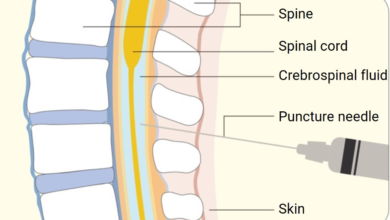Physiotherapy Techniques for Stress Relief in High-Pressure Jobs

Work injury physiotherapy focuses on the assessment, treatment, and prevention of injuries or conditions related to the workplace. Work injury physiotherapy in Edmonton aims to facilitate the safe and prompt return of injured workers to their job duties while minimizing the risk of re-injury and promoting long-term health and productivity in the workplace.
Physiotherapy Methods to Alleviate Stress:
Physiotherapy techniques can be valuable tools for stress relief in high-pressure jobs. Here are some techniques that physiotherapists may incorporate:
Breathing Exercises:
Deep breathing exercises can help minimize stress by activating the body’s relaxation response. Physiotherapists may teach techniques such as diaphragmatic breathing or progressive muscle relaxation to maximize relaxation and relieve tension.
Alternate Nostril Breathing:
This yogic breathing technique entails using the thumb to close one nostril while deeply inhaling through the other nostril, followed by the closure of the latter nostril with the ring finger and exhaling through the opposite nostril. It can help balance the body’s energy, diminish stress, and promote a sense of inner peace and clarity.
4-7-8 Breathing:
This method consists of inhaling for four counts, maintaining the breath for seven counts, and exhaling slowly for eight counts. It can help regulate the breath, promote relaxation, and reduce feelings of anxiety or tension.
Massage Therapy:
This can help to alleviate muscle tightness, improve blood circulation, and promote relaxation. Physiotherapists may use various massage techniques like deep tissue massage or trigger point therapy to focus on areas of tension and stress.
Trigger Point Therapy:
These are specific areas of muscle tightness and tenderness that can develop in response to stress and overuse. Physiotherapists may use trigger point therapy techniques, such as applying sustained pressure to these points, to release tension and alleviate pain, promoting stress relief and relaxation.
Deep Tissue Massage:
This targets deeper layers of muscles and connective tissue to release chronic tension and knots. Physiotherapists may use deep tissue massage to address areas of muscle tightness and stress-related tension, helping individuals to feel more relaxed and at ease.
Cognitive Behavioral Therapy (CBT):
CBT techniques aid individuals in recognizing and altering negative patterns of thinking and behaviours that contribute to stress. Physiotherapists may incorporate CBT principles into their treatment approach, identifying triggers for stress, developing coping strategies, setting realistic objectives, and establishing healthy boundaries to promote work-life balance.
Stress Management Planning:
- Identifying Triggers for Stress: They create a supportive environment for clients to explore stressors, enabling reflection and insight into root causes.
- Developing Coping Strategies: Tailored coping strategies are created for individuals, including relaxation and stress management techniques, to foster emotional regulation and resilience.
- Setting Realistic Goals: Physiotherapists help individuals set achievable goals, breaking them down into manageable tasks for progress tracking and boosting motivation.
- Establishing Healthy Boundaries: They aid in setting boundaries for work-life balance, promoting self-care and assertiveness to prevent burnout.
Stretching:
Gentle stretching exercises can help release tension held in the body due to stress. Physiotherapists may prescribe specific stretches to target areas of tension, such as the neck, shoulders, and back, and incorporate yoga-based movements to improve flexibility and promote relaxation.
Shoulder Stretches:
- Shoulder Rolls: Perform shoulder rolls by rolling the shoulders forward and backward in circles to release tension in the shoulders.
- Shoulder Stretch: Cross one arm over the body and gently press it closer to the chest using the opposite hand, stretching the shoulder and upper back.
Full-Body Stretches:
- Standing Forward Fold: Stand with your feet positioned hip-width apart and then bend forward at the hips, allowing the upper body to hang loose and releasing tension in the spine, hamstrings, and shoulders.
- Seated Spinal Twist: Sit tall with legs extended or bent, with one hand resting on the opposite knee and the other hand positioned behind the body, stretching the spine and releasing tension in the back and shoulders.
Exercise Prescription:
Consistent exercise is vital for stress management and fostering overall health. Physiotherapists may prescribe tailored exercise programs to help individuals incorporate movement into their daily routine and lessen the deleterious effects of stress on the body.
Strength Training:
Strength training exercises, such as body weight, resistance bands, or weights, help build muscle strength and endurance while promoting relaxation. Physiotherapists may prescribe strength training exercises targeting major muscle groups to improve posture, reduce muscular tension, and enhance physical resilience to stress.
Mindful Walking:
Walking is a straightforward yet highly effective way to stay active and maintain good health. Physiotherapists may encourage individuals to practice mindful walking, concentrating on the sensations of each step and the environment around them to promote relaxation and reduce stress levels.
Relaxation Techniques:
Physiotherapists may teach relaxation techniques like progressive muscle relaxation, visualization, or guided imagery to help individuals handle stress and promote a sense of calmness and well-being.
Progressive Muscle Relaxation (PMR):
Progressive Muscle Relaxation (PMR) entails the systematic contraction and release of various muscle groups to facilitate both physical and mental relaxation. Physiotherapists may guide individuals through a series of muscle contractions and releases, helping them to become more aware of tension within their bodies and learn to release it consciously.
Enhancing Workplace Health:
Work injury physiotherapy in Edmonton plays a crucial role in enhancing workplace health and promoting overall well-being among employees. Through comprehensive assessment, personalized treatment plans, and proactive injury prevention strategies, WCB physiotherapy helps injured workers recover from injuries, improve physical function, and safely return to work. In Step Physical Therapy helps individual employees by facilitating recovery, reducing the risk of re-injury, promoting productivity, reducing healthcare costs and fostering a culture of health and safety within the workplace. As organizations prioritize employee health and well-being, work injury physiotherapy in Edmonton emerges as a valuable resource in safeguarding the health of the workforce and optimizing workplace performance.
Keywords: work injury physiotherapy Edmonton, work injury physiotherapy, WCB physiotherapy, In Step Physical therapy





